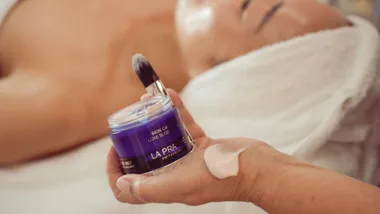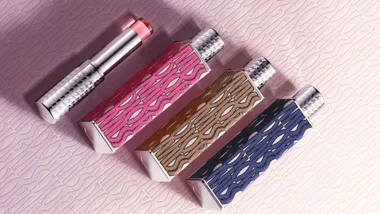Beautiful, clear skin, here we come! I think there’s one thing we can all agree on – pimples suck. No matter where they are, nobody is ever excited about the pesky little things showing up seemingly out of nowhere. Despite your skincare routine being on point – you scrub and you wash and you tone and you moisturise – they still show up just when you least need them, like right before a big interview, presentation, or right before a big event.
There is a theory called ‘acne face mapping’ that suggest the location of your acne could present the answer to what’s causing it. Traditional Chinese medicine and Ayurvedic traditions, for example, maintain that a weakness or toxicity in a certain organ or gland in the body can result in acne showing up in certain areas of the skin. So, with that being said, you can do some detective work to help clear up your acne via acne face mapping. It’s also important to note that while acne face mapping may be a good indicator of why your acne is appearing, it’s always important to treat acne depending on your skin type.
RELATED: How To Treat Hormonal Acne
Skinstitut expert Zoe Devine, says some mild acne can present within certain areas of the face due to external triggers such as talking on the phone (presenting on the cheeks), comedogenic make-up such as bronzer and blush (presenting on the cheeks), hats or hair products (occurring around the hairline), lipsticks or balms (along the lip line). This type of acne is often referred to as acne cosmetic.
It’s also believed that acne which persistently presents within one location on the face can be a sign of internal imbalances within the body, as explained via Holistic Skin Analysis. Accordingly, to Holistic Skin Analysis, it’s believed that each part of the face corresponds to an internal body system and if that system is out of balance you can see changes in the skin. For example, the chin relates to elimination, if bowels are sluggish, of the diet is very high in inflammatory foods such as caffeine and sugar (with little hydration) some people may notice acne in this area. Commonly seen is also acne along the jawline, this area is very hormonal and can be linked to excessive stress also.

Forehead:
Pimples here are usually linked to the digestive system and may indicate that your body is finding it hard to break down certain foods. It may also indicate liver problems, stress or irregular sleep schedule.
T-Zone or between the brows:
Greasy, fatty and processed foods may be connected to acne here. Stick with healthy choices as much as you can. Another possible cause – too much alcohol. If you find pimples here after a night out where you consumed a few drinks, that may be your issue. They never let us have any fun.
Cheeks:
Pimples popping up on your cheeks may indicate that you’ve come into contact with polluted air – usually from spending time in congested areas. And unfortunately, the air in our homes can be just as bad, or worse! Allergies that affect the respiratory system may also be to blame, or if you pressed your cell phone against your skin while talking, germs may have been transferred to your face. Always wash skin thoroughly before bed to try to get rid of trace contaminants. Sometimes, acne here can be a symptom of too much sugar in your diet, cut back for a few days and see if that helps.
Chin:
You can blame that time of the month for this one. Chin pimples are often hormonal acne caused by changes in your hormones. In the days before your period, try to pay extra attention to your skin care. Consider eating foods that help regulate our natural hormonal cycles. Also be sure you’re not resting your chin in your hands when bored or tired, as this can transfer oils from your fingers onto your chin, which can cause pimples.
RELATED: How To Stop Adult Acne In Its Tracks

How can you prevent acne?
It is difficult to completely prevent acne in susceptible individuals and there is no one ‘cure’ for acne. Despite this, there are many things you can do in your daily lifestyle to help reduce the likelihood of acne by ensuring your body is in balance as best it can be.
Try limiting high glycaemic index (GI) foods such as high sugar foods, refine carbohydrates etc. Frequent consumption of high GI foods can increase the hormone insulin which has a knock on effect to other hormones (elevates androgen concentrations thereby increasing sebum production, all of which can contribute to acne development.
What are the key ingredients and skin care products for acne treatment?
Skinstitut expert Zoe Devine suggests the following to treat acne:
Glycolic or L.Lactic Acid – alpha hydroxy acids act as chemical exfoliators that help to break dissolve the intracellular glue that traps old dead skin cells that could ultimately lead to congestion.
Papain Enzymes – also an exfoliating ingredient that breaks down excess dead skin cells due to its proteolytic acid, though papain is much gentler in action and can be used in sensitive areas or more compromised skin as compared to alpha hydroxy acids.
Vitamin B – Niacinamide (B3) is a fantastic ingredient for acne-prone skin as it helps to strengthen the skins barrier function, repairing skin damage, helps fade unwanted discolouration in the skin, acts as an antioxidant plus helps alleviate redness and inflammation. Vitamin B3 is also great to act upon the sebaceous glands.
Vitamin A – (particularly retinol) assists to normalise the cellular chemical process that produces energy and growth, attempting to correct any imbalances. Vitamin A assists with cell renewal and cell turnover while also helping to balance sebaceous secretions.
Canadian Willow Herb – a plant extract that has anti-microbial action against the p.acnes bacteria. This soothing extract exerts anti-inflammatory action and assists to calm the skin.










